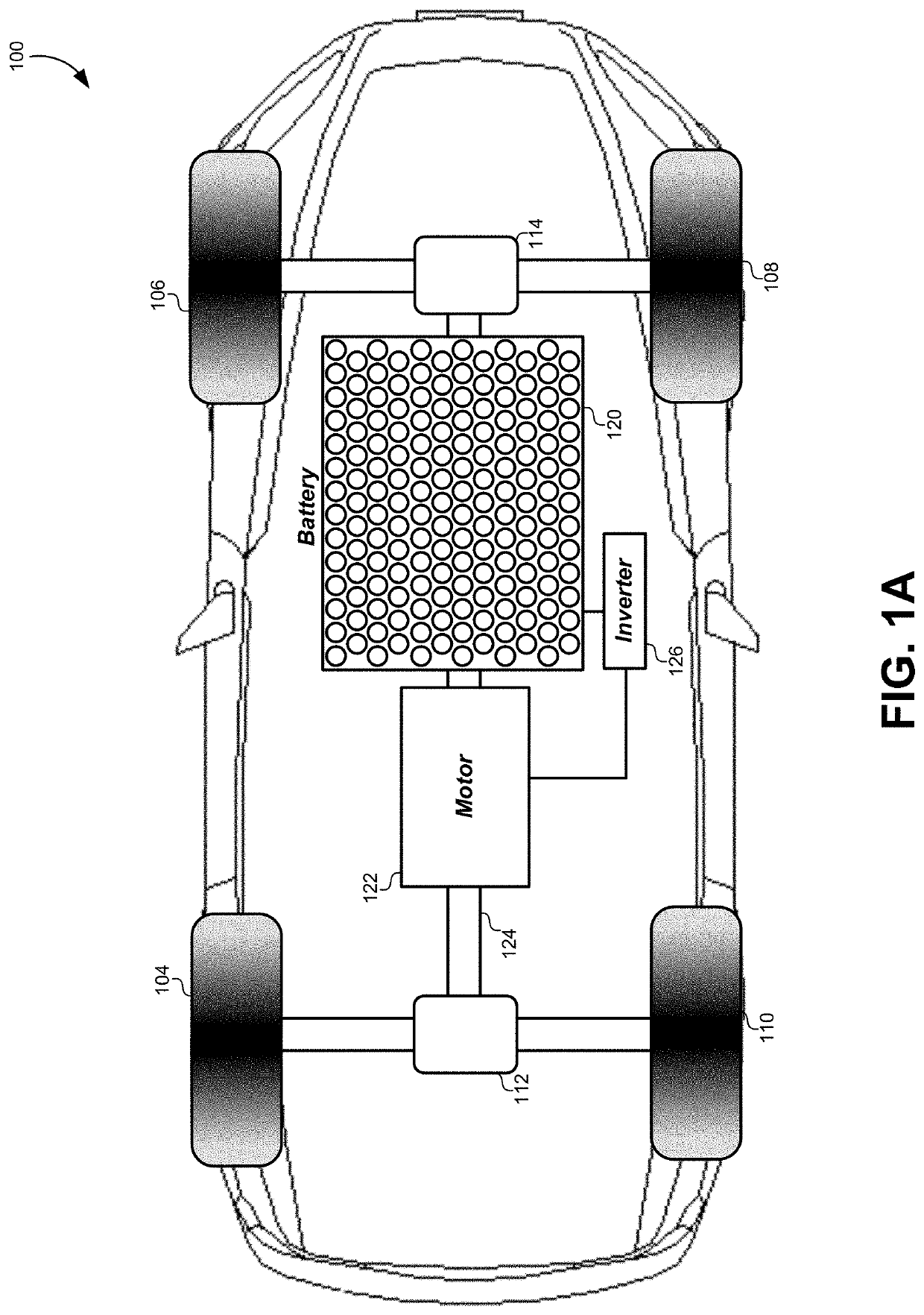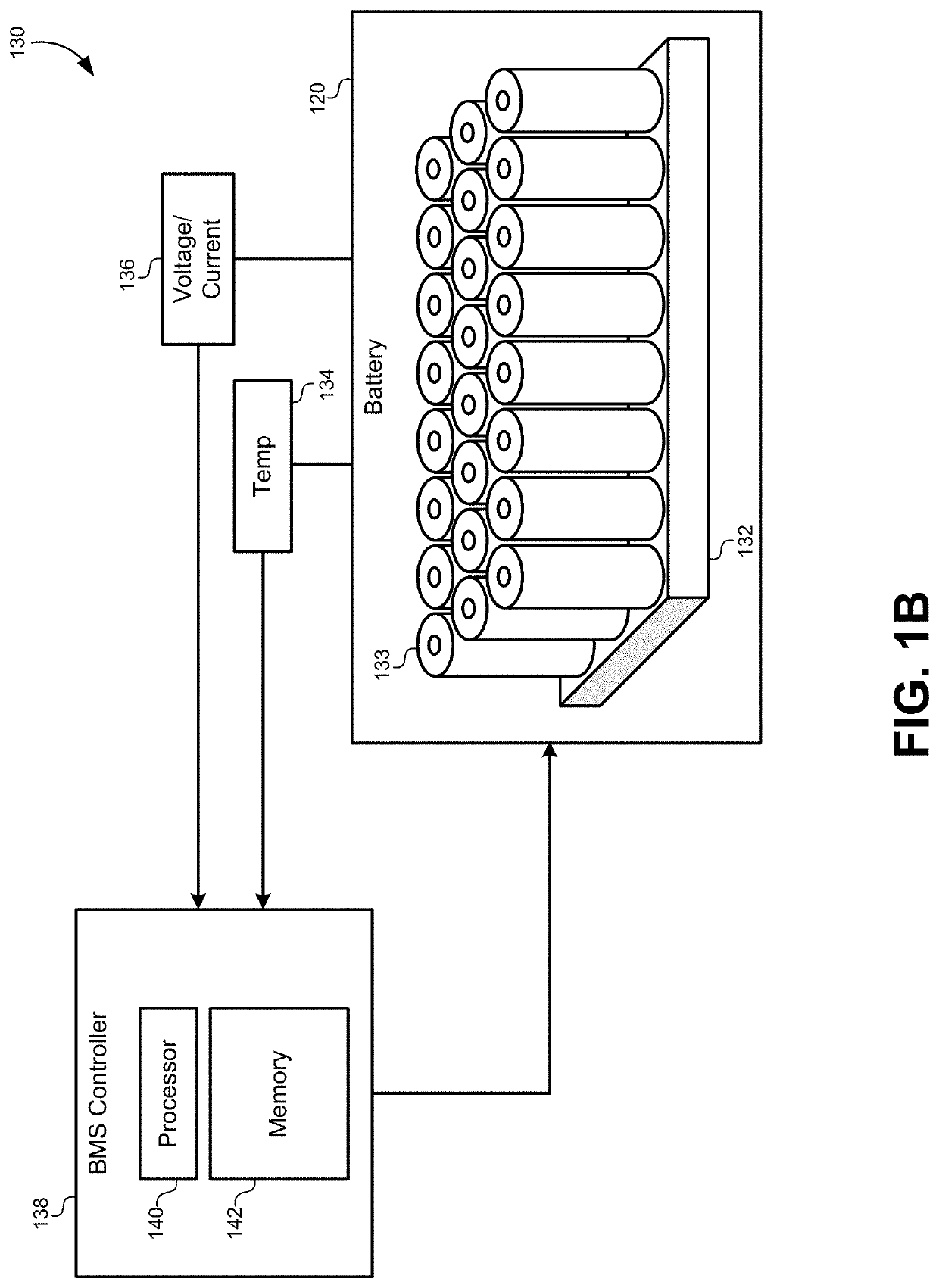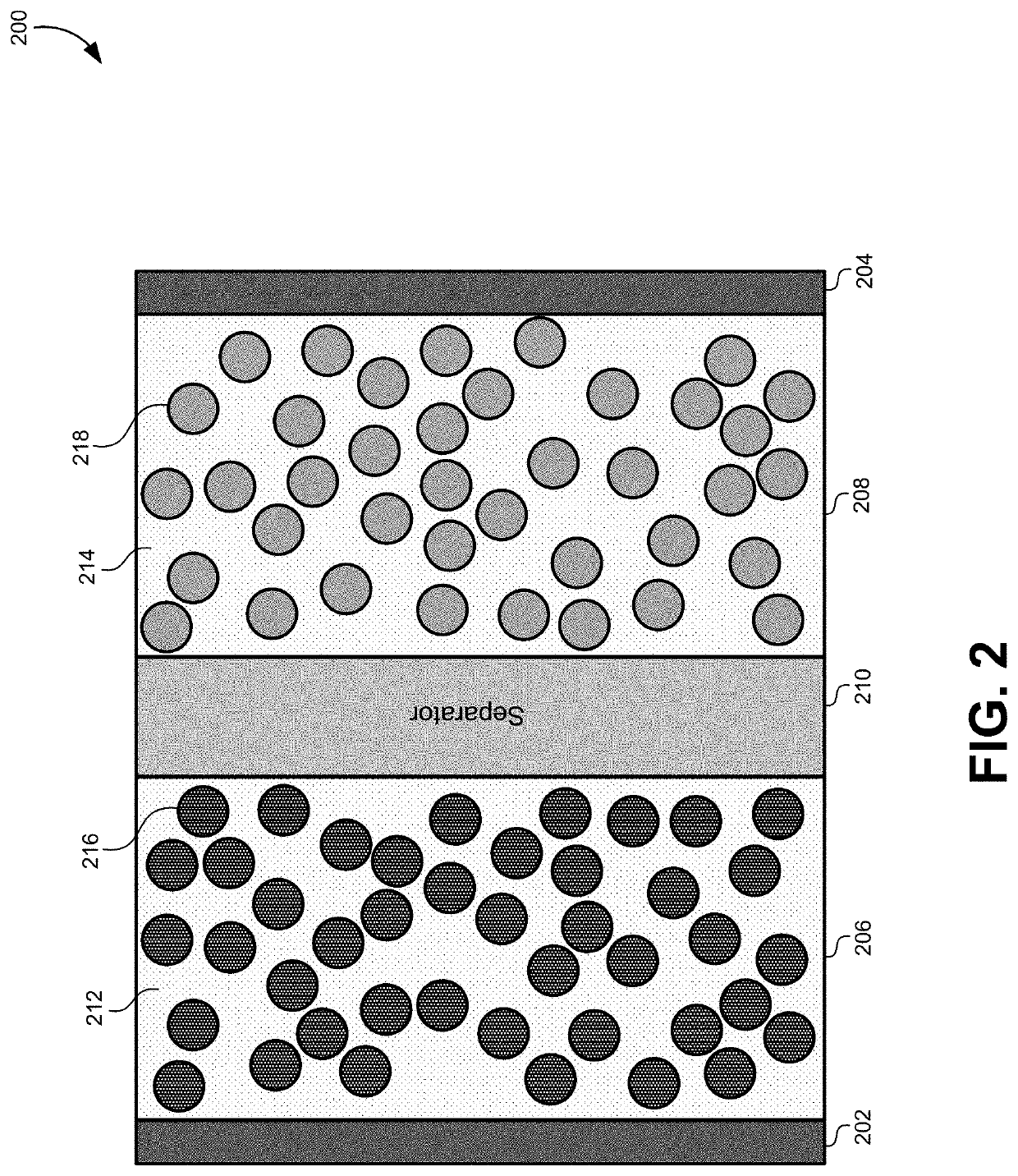Battery cell design with a non-invasive lithium reference lead
a battery cell and non-invasive technology, applied in secondary cells, battery components, battery service/maintenance, etc., can solve the problems of difficult to characterize fluctuations in electrical potential, difficult to achieve non-equilibrium kinetics, and serious technical challenges in the use of lithium ion cells
- Summary
- Abstract
- Description
- Claims
- Application Information
AI Technical Summary
Benefits of technology
Problems solved by technology
Method used
Image
Examples
Embodiment Construction
[0019]Described herein, are embodiments for a non-invasive, three-electrode battery cell that provides a lithium reference lead. A jelly roll can be manufactured where the electrical lead tabs for both the anode and the cathode layers extend from the top side of the jelly roll instead of from alternating sides (i.e., top and bottom sides). A cap has been designed that includes two separate metal regions that form the anode and the cathode for the electric cell. These metal regions on the cap can be electrically coupled to the two metal regions of the cap such that the anode and cathode are both measurable from a top side of the battery cell. The jelly roll can be inserted into a lithium sleeve which may also be spot welded to the aluminum can of the battery cell. The lithium sleeve can then provide a third lithium reference that does not interfere with the internal chemistry of the cell. This lithium reference also can be used in-situ during both testing and real-world applications ...
PUM
 Login to View More
Login to View More Abstract
Description
Claims
Application Information
 Login to View More
Login to View More - R&D
- Intellectual Property
- Life Sciences
- Materials
- Tech Scout
- Unparalleled Data Quality
- Higher Quality Content
- 60% Fewer Hallucinations
Browse by: Latest US Patents, China's latest patents, Technical Efficacy Thesaurus, Application Domain, Technology Topic, Popular Technical Reports.
© 2025 PatSnap. All rights reserved.Legal|Privacy policy|Modern Slavery Act Transparency Statement|Sitemap|About US| Contact US: help@patsnap.com



